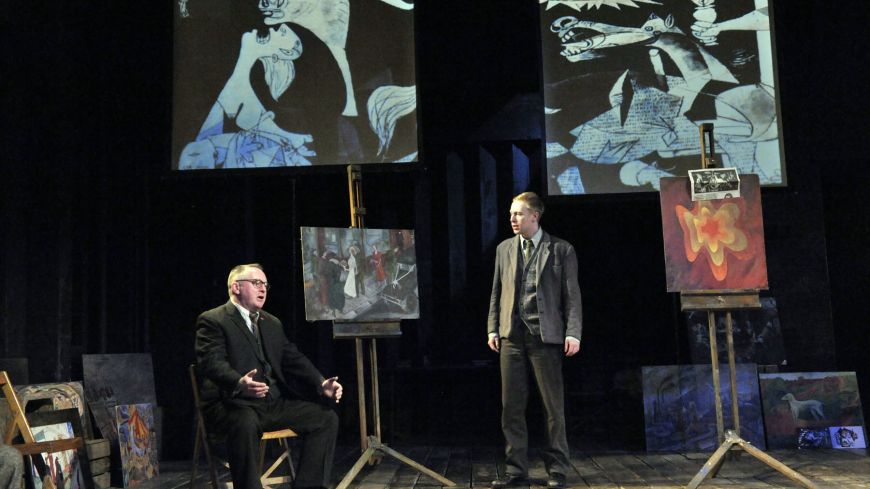
Based on the book by William Feaver, Lee Hall’s acclaimed play, The Pitmen Painters, takes us on a journey of edification from pit shovel to paint palette.
It tells the story of a group of 1930s miners in Ashington, Northumberland who hold weekly meetings in a local hut as part of the WEA (Workers’ Educational Association).
Having worked through various subjects, they decide to have a go at art appreciation and hire the then Master of Painting at King’s College, London, Robert Lyon, to teach them.
With the miners having a mountain of art history to climb, Lyon decides to encourage the men to produce their own paintings and real talent starts to shine through.
Still doing their arduous shifts down the mine, the men continue to paint in their spare time. Eventually, they sell to collectors and get to know contemporary avant-garde artists.
The various characteristics of the original much larger number of men who became known as the Pitmen Painters are distilled into the play’s five main characters.
The tightly written script brilliantly captures the rule-bound pedantry of Union rep George; the high socialist ideals of dental mechanic Harry; the slow blossoming of the unemployed Young Lad; the down-to-earth cynicism of Jimmy and the real emerging talent of Oliver.
Each actor captures these traits and developments with convincing skill and each delivers the speech and puns in the distinct Ashington dialect often to great comic effect.
The set of bare boards, old crates and folding wooden chairs with the old piped radiator capture the atmosphere of the electricity-free stark hall that is The Hut.
Images of some of the actual paintings produced at the time are projected on to old roll out screens suspended within the set - technology making a discreet entry into this sensitive encapsulation of a former time: 1934–1947 to be precise.
The costumes exquisitely show the well-dressed garb of decent working men of the time who took great pride in their appearance when work gear was discarded.
The harsh industrial sounds roar through the auditorium at scene changes as a stark reminder of the dual life of the men.
Music, like the song from the era "Painting the Clouds with Sunshine" and the beautifully moving miners’ hymn at the end are perfectly pitched.
The text is a vehicle for philosophical debate about spirituality; the meaning and importance of art in life; about choice and change; about what is personal and what is political; about whether the group matters more than the individual.
As a character summed up with the four words: ‘hope, aspiration, art and socialism’. These were high ideals typical of the time when self -improvement in the working class was prevalent.
There is tension between the worlds of privilege and non-privilege when unavoidable patronage and patronising rears its Janus head, yet the play shows that the shining blade of enlightenment can cut a swathe through class differences.
This is a wonderful and thoroughly engaging evocation of a time of hope and vision for change. A great night of theatre!
Monday 13 to Saturday 18 May 2013, 7.30pm; also Wed and Sat 2.30pm

